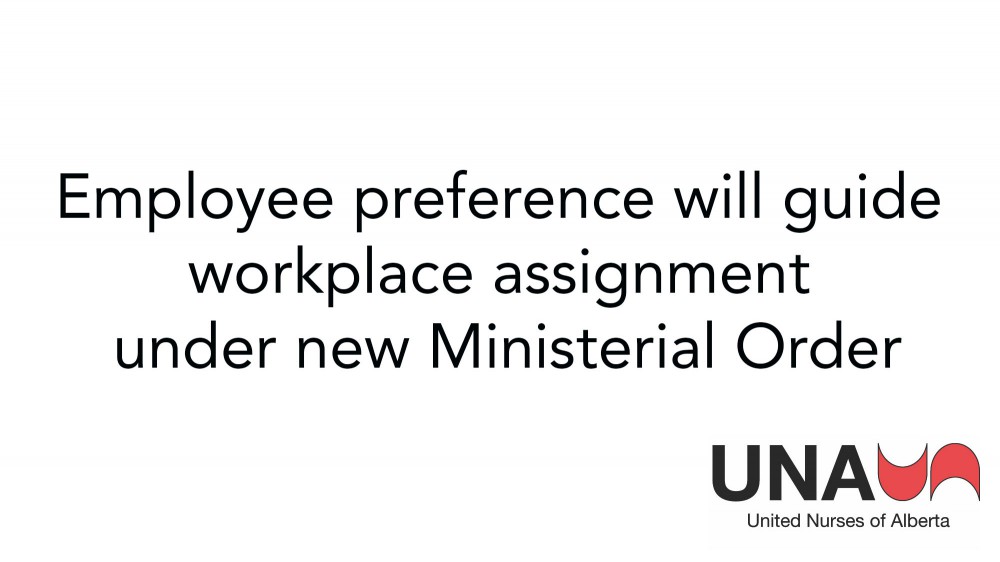Employee preference will guide workplace assignment under new Ministerial Order
Employee preference will be the key factor in determining workplace assignments of health care workers in long-term care facilities during the COVID-19 emergency, a new Ministerial Order signed Friday by Labour Minister Jason Copping says.
Ministerial Order 2020-26 was drafted with the assistance of an Advisory Committee on Seniors’ Care made up of representatives of Alberta’s four largest health care unions and an equal number of long-term-care facility operators. The order clarifies procedures for determining work assignments, scheduling, leaves of absence, and dispute resolution during the emergency that were included in an earlier Ministerial Order.
The Advisory Committee, facilitated by veteran mediator, arbitrator and Alberta Labour Relations Board Vice Chair Lyle Kanee, made a number of recommendations, most of which were accepted by the minister, said United Nurses of Alberta Labour Relations Director David Harrigan, who participated in the process.
The new Ministerial Order eliminates a number of concerns the parties had with the previous order published by the minister in response to the Chief Medical Officer of Health’s Order 10-2020 on April 10.
Among the Chief Medical Officer of Health’s requirements in CMOH Order 10-2020 are that each employee working in long-term care would be permitted to work only at one worksite and that all reasonable efforts are made to keep staff members whole and avoid financial loss due to the order to work only at a single facility.
Key among the changes in the new Ministerial Order signed Friday is that employees will now be responsible for determining their workplace when they are required under the Chief Medical Officer of Health’s order only to work at a single worksite. Employer preference is no longer a factor in determining where full time and part time employees will work.
For the duration of the order, where reasonably practicable:
- All employees who work at only one health care facility will remain at that facility
- Regular full-time employees who work as regular part-time employees or casuals at more than one facility will work at the facility where they are regular full time
- Regular part-time employees who work at only one facility as a casual will work at the facility where they have regular status
- Regular part-time employees who work at more than one facility as regular part time employees will select which facility at which they wish to work
- Casual employees who work as casual employees at more than one facility will select which facility at which they wish to work
Other important provisions of the order include a requirement for employers to maintain employees’ group and pension benefits during the time they not able to provide their usual services, and allowing employees to return to work in the same position or positions when the Chief Medical Officer of Health’s order is no longer in effect.
Provisions are also made to increase affected employee’s scheduled hours of work to equal their combined hours to the maximum of a full-time equivalent position.
The new order includes a dispute resolution process in which any dispute about the application of the terms of the order will be addressed by the Alberta Labour Relations Board through an expedited process.
In addition to Harrigan from United Nurses of Alberta, the union members of the Advisory Committee were Alberta Union of Provincial Employees Executive Director Carl Soderstrom, Canadian Union of Public Employees In-House Counsel Ella Henry, and Health Sciences Association of Alberta Executive Director Mike Boyle. Employers were represented by Bethany Group Camrose Chief Executive Officer Mike Leathwood, AgeCare Ltd. Vice-President and General Counsel Salimah Walji-Shivji, Bethany Care Society of Calgary President and CEO Jennifer McCue, and Greater Edmonton Foundation Seniors Housing Executive Director Raymond Swonek.
A copy of Ministerial Order 2020-26 is included with this update.

